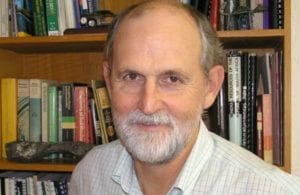Q. With regard to township development, what products and services can you offer to enhance the built environment?
GJ Kaytech is world renowned for its polyester bidim geotextiles, which are used extensively in drainage and separation applications. In terms of applications, bidim offers five main applications: drainage, erosion control, soil stabilisation, road building and waste containment (such as landfill construction). Our prefabricated drainage systems are as quick and easy to install as they are popular and have been used with great success since 1985. In terms of rural development, a definite cause for concern is the escalating cost of paved roads and the need for cost-effective solutions for our rapidly deteriorating network. Kaytech is also well-known for its road maintenance systems: the Sealmac Paving Fabric, GlasGrid asphalt reinforcement geogrid and the Sealgrid Composite asphalt reinforcement fabric. Many municipal roads departments have used GlasGrid to save on pavement reconstruction costs. Often rural township roads are inaccessible due to inadequate reinforcement or sub-standard construction. Our Multi-Cell product can be used in the construction of rural roads, especially those on steep grades. In addition, Multi-Cell is great for use in the construction of stormwater side channels and drains. Where and how are your products utilised in the built environment? Since 1971, the company has been pioneering and developing geosynthetic products and applications for use in drainage and filtration, separation and reinforcement, road maintenance and rehabilitation, water and waste containment, erosion protection, hydraulic construction, liner protection and waterproofing for building and civil construction. We are supported by Geosynthetic Laboratory, an independent dedicated geosynthetics laboratory that has the most advanced geosynthetic testing equipment in Africa and is SANAS accredited for a number of geosynthetic specific tests under the EN ISO/IEC 17025 international standard for accredited laboratories. Kaytech has established strong links with a global network of reputable geosynthetic suppliers in Europe, Australia, UK, US, Canada, South America, India and South East Asia.What do you think are the significant challenges facing development in townships? What could government do differently?
Despite the Municipal Infrastructure Grant allocations to the different municipalities and local authorities, many of the roads and services departments of these different cities, towns and townships tend to be lacking in adequate civil and roads engineering skills to ensure proper delivery of infrastructure for the rate paying residents. Also the funds received are not always utilised for the intended purpose – roads, stormwater, etc. The dearth of skills presents a huge challenge to the industry where design consultants are usually called in and tasked with the job of ensuring service delivery within the constraints of time and costs. Sometimes consultants are appointed who have limitations in terms of resources and experience, thus compounding the problems facing the owner of the infrastructure. What gives your products a competitive advantage? Bidim and Sealmac: We are the only company in South Africa that manufactures bidim and Sealmac by converting ‘green’ PET pellets and flake (100% recycled polyester cool drink bottles) into extruded fibre via a continuous filament spun bonding process, which is then needle punched to give the finished geotextile its structural integrity. Multi-Cell: The concrete-filled Multi-Cell geocell system is best suited for labour-intensive construction methods, thereby providing training and local work opportunities for the community. Multi-Cell also offers durability and low maintenance and thus is more cost effective. Infiltrator Chambers: Quick and easy to install, this product has the advantage of being 100% environmentally friendly as it is produced from recycled plastic waste material. The many benefits (compared with conventional stone and pipe systems) include a guaranteed 140 ℓ volume capacity, ensuring an extended soak-away lifespan; conventional aggregate backfill is expensive, which makes using in situ soil as a backfill in Infiltrator more cost effective. Other benefits are a small footprint with equal or better performance allowing less site disruption, larger effective infiltrative area per linear metre allows installation on limited area sites, and a maximum infiltrative soil interface area.







